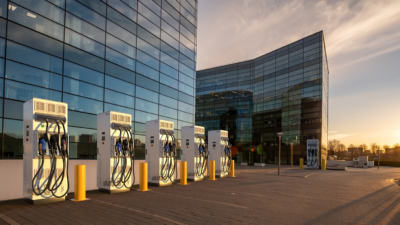Companies that practice what they preach are usually companies that succeed. There is a clear connection between organizations that practice ethical business practices and improved financial performance. And while outlining core values and a corporate mission is important, if organizations can’t follow up on promises and walk the talk, those promises ring hollow.
When I think about the property management industry, the idea of walking the talk by conducting business in an ethical manner is top of mind. Business ethics relates to companies’ business policies and practices regarding governance, discrimination, social responsibility and fiduciary responsibility. Each of these concerns is extremely important in the world of property management and can be impactful to the business. However, when I think about our industry and how we can be more socially and financially responsible, the ideas around sustainability are top of mind. Being smart with our resources and planning for the future while reducing our total carbon footprints is very important. There are many opportunities and strategic plans to efficiently manage assets while saving money, adding value and reducing energy consumption. If we do this properly, we retain tenants, add value to the asset, create a better environment and provide a better experience for everyone.
I recently read about an innovative home solutions store, Treehouse, which has been dubbed “the Whole Foods of home improvement” because it focuses on promoting sustainable and healthy homes. And Treehouse doesn’t just advertise this mission; they are an energy-positive big-box store. They create more energy than they use with their implementation of saw-toothed roofs positioned to maximize solar panels and a rechargeable Tesla power pack for utility applications.
How can we in property management follow this example and be a leader in sustainability?
Be Efficient
Leadership in Energy and Environmental Design (LEED) has changed the way we do business. Following LEED standards when designing and building space is best —and, in some areas, required —but when managing an existing building, you can perform energy audits to see where savings are possible and evaluate existing systems in place to see where upgrades can be made.
Cost Savings is Important, But Should be Smart
It’s great to save money, but if the effort outweighs the benefit, it’s not worth it. Building a green roof to save money on electricity sounds great but not if it is out of budget and the current roof isn’t in need of replacement or repair. Sustainable changes should be made as appropriate to fit budget and job scope.
Green Roofs: Bringing Nature to the Concrete Jungle
Small Changes Equal Big Return
It goes without saying that even small changes can make a difference. Swapping LED lightbulbs for incandescent bulbs or replacing paper products with those made of recycled materials are easy fixes that make a substantial difference over time. But other small changes, such as putting lights on sensors or daytime timers, reducing air conditioning loads after hours and on weekends, installing water-saving fixtures like low-flow toilets and sensor-activated sinks and maintenance and proper calibration/setup can have a large impact over time.
AI in Building Management: Here Come the Smart Buildings
Look to the Future
As you plan, outline initiatives that can be both sustainable and cost-efficient. ROI can be easily predicted; some utility providers offer rebate programs that can help finance installation of sustainable equipment because it’s better for everyone. And certainly, start small, with efforts like switching to LEDs and good equipment setup, easing into larger sustainable efforts.

 Tim Allison
Tim Allison

 Patrick Duffy
Patrick Duffy John Scott
John Scott Jacob Pavlik
Jacob Pavlik


 Bret Swango, CFA
Bret Swango, CFA